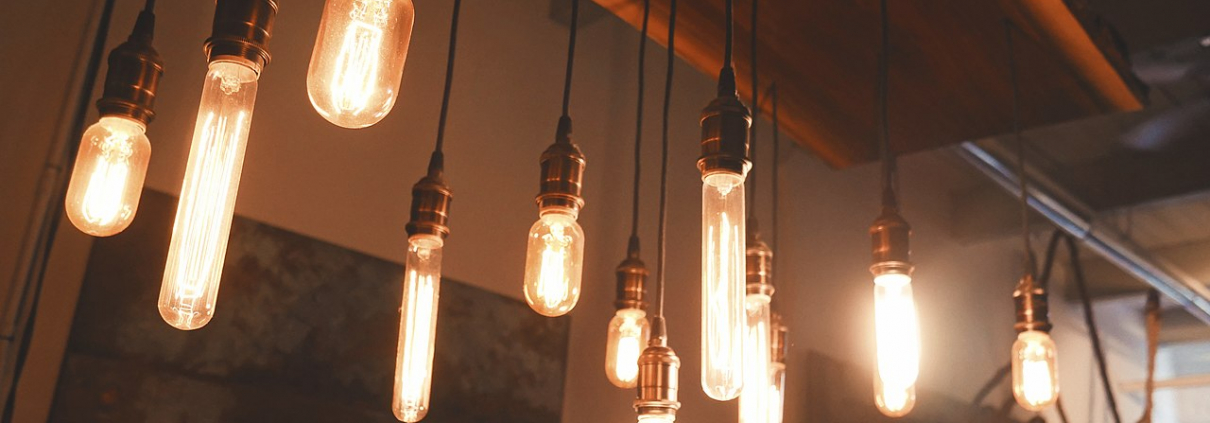 Patrick Tomasso impatrickt, CC0, via Wikimedia Commons
Patrick Tomasso impatrickt, CC0, via Wikimedia CommonsCommon Lighting Terms
Ballast – Provides the proper starting and operating current and voltage needed to power fluorescent or high intensity discharge lamps. Some current LED lamps are direct-wire and do not require a ballast. Like light bulbs, ballasts degrade over time and need to be replaced when they fail. This should be a cost consideration when choosing new lighting.
Candela – A measurement of the visible intensity of the light. A laser, for example, would have a very high candela value. A common candle emits light with the luminous intensity of roughly one candela.
Color Rendering Index – Also called CRI, a measure of how accurately the light reproduces the color of the objects it illuminates. The scale ranges from 0 to 100, with 100 being the best. A metal halide bulb, for example, offers much better color rendering than a high pressure sodium bulb. Most LEDs have a high CRI value as well. The CRI of a bulb can usually be located on the label of the bulb box or in the manufacturer’s cut-sheet materials.
Color Temperature – The color temperature of a bulb is given in degrees Kelvin. An incandescent lamp has a color temperature of about 2,700 degrees Kelvin. A CFL typically produces color temperature of 3,500 degrees Kelvin. LED and fluorescent lamps are available in a range of color temperatures. Preferred color temperature is a matter of taste, but most residential applications are closer to the 2,700 degree value and outdoor applications range from 3,000 to 4,500. Before changing out an entire area, you might want to test one bulb to be sure you are happy with the color temperature.
Efficacy – Lumens of light produced per watt used. Efficacy is important in effective lighting because it shows how many lumens a light produces for each watt it uses. The greater the efficacy, the more efficient the lamp. To determine a bulb’s efficacy, you divide the number of lumens by the number of watts used by the bulb. Both of these values are usually shown on the bulb box or in the manufacturer’s product information. The product information is sometimes called a “cut sheet” and you can usually find these on the manufacturer’s website.
Foot candle – A measurement that describes the amount of light that actually lands on a surface. It is measured in lumens per square foot.
Kilowatt-Hour – A measurement of energy used over time. This measurement is commonly used by the utilities to measure and bill for energy use.
Light Quality – How well people can see and how visually comfortable they are.
Lumen – A measurement of visible light coming from an object.
Watt – A measurement of power that is used to measure the energy demand of an item like a light bulb. For conversion, one kilowatt, or one KW, is equal to 1,000 Watts.
